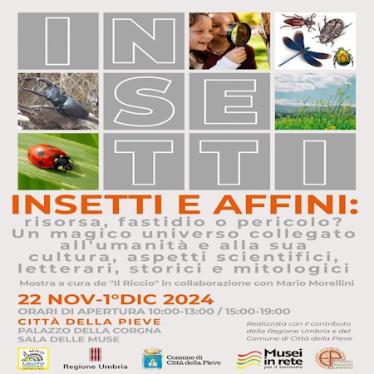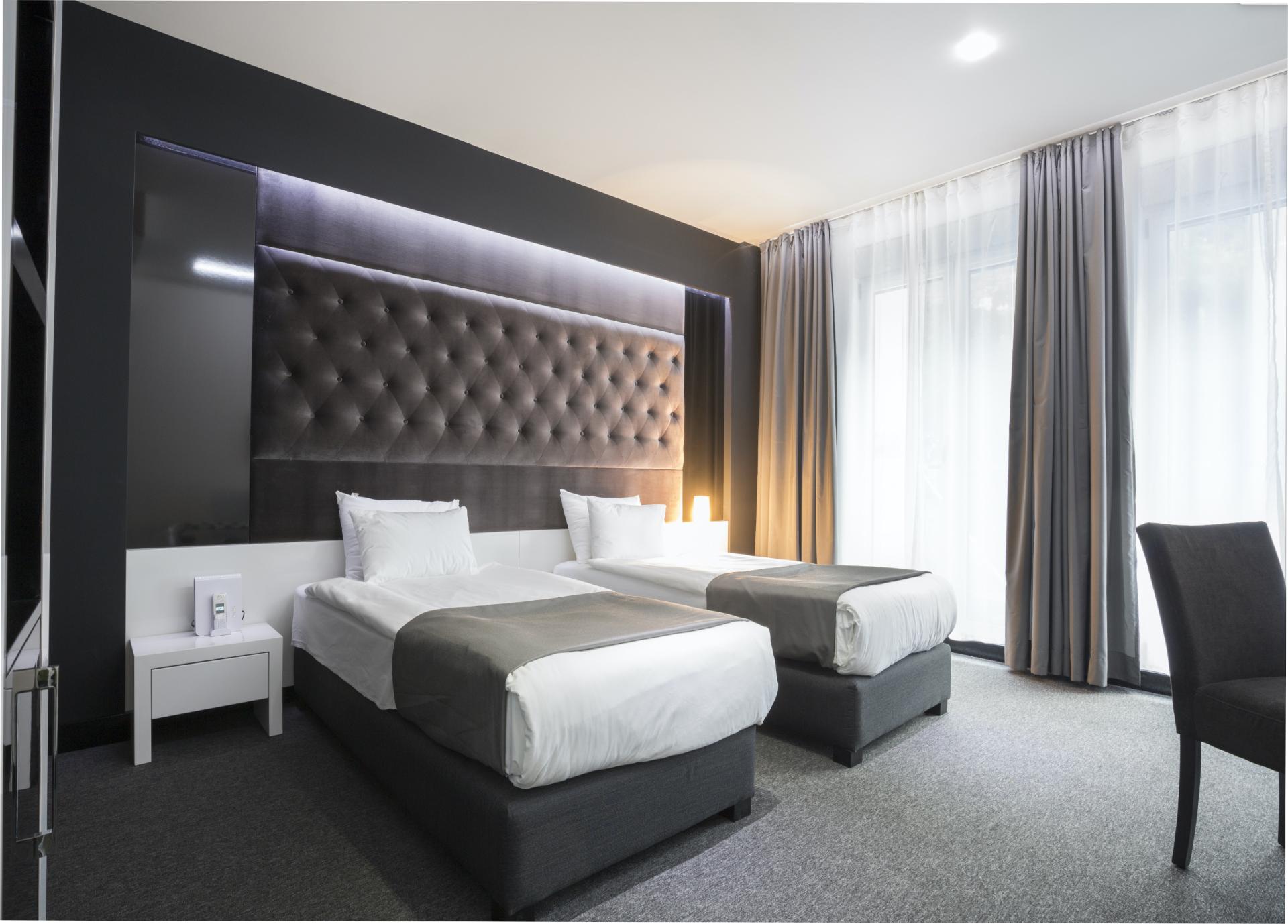Città della Pieve, with its urban structure, warm brick colors, and streets that are not too narrow and winding—unlike those typically seen in the green heart of Italy—closely resembles the villages in the area of Siena. After all, Tuscany is just a few kilometers away. Situated on the border, Città della Pieve extends along a hillside, “tawny and compact in its bricks”, produced since the medieval era, offering stunning views and perspectives of Mount Amiata, Mount Cetona, Mount Subasio, and even the distant Sibillini Mountains.
Back in time
Originally an Etruscan-Roman center belonging to the powerful city of Chiusi, in the 7th century it became “Castrum Plebis”, a fortified village built around the Church of Saints Gervasio and Protasio by the Lombard dukes. In 1188, it was subdued by Perugia; under Frederick II of Swabia, the medieval town adopted its current urban layout in the shape of an eagle flying toward Rome in his honor. Due to its enviable position, it was contested by various mercenary captains, including Vanni Bandino and Braccio Fortebraccio da Montone. Around 1450, Pietro di Cristoforo Vannucci was born here, who would become the greatest artist in the peninsula in the latter half of the 15th century.
In 1529, Pope Clement VII de' Medici took the city from Perugia's control, bringing it directly under his jurisdiction; in 1550, Pope Julius III entrusted the lordship of Città della Pieve to the mercenary leader Ascanio Della Corgna (Julius III's nephew, son of his sister Giacoma Ciocchi del Monte). As the city's perpetual governor—this was Della Corgna's title—he commissioned the beautiful palace that still stands today as one of the town's main attractions, showcasing the artistic achievements of Mannerist painters Nicolò and Antonio Circignani and Salvio Salvini.
In 1783, Città della Pieve became the seat of the Water Magistracy, a key role in reclaiming the Valdichiana, established by the so-called Hydraulic Concordat between Pope Pius VI and Grand Duke Leopold I of Tuscany. During this time, the town was enriched with numerous public works and private buildings, not only thanks to the arrival of new economic prosperity but also due to the skills of workers trained in the cities of Rome and Florence. This period saw the construction of the Avvaloranti Theatre, designed by the excellent neoclassical architect Giovanni Santini, and the noble palaces Baglioni, Giorgi-Taccini, Fargna, and Carloni, as well as the bell tower of Santa Maria dei Servi.
A major administrative and religious center in the region, Città della Pieve remained under Church rule (except during the Napoleonic era) until 1860.
A crossroads of art and culture: What to see in Città della Pieve
Its location at the intersection of Umbria, Tuscany, and Lazio is a defining feature of its landscape, where Umbrian, Tuscan, and Lazio influences blend harmoniously, enhanced by the natural beauty of the surroundings. The gentle hills are illuminated by the magnetic brightness radiating from Perugino’s paintings, the silvery green framing the countryside around the town, and the intense pink of the terracotta bricks, echoing the ancient local tradition of brickmaking, which has been practiced here since the early 13th century.
According to a charming theory, the town was given the shape of an eagle in honor of Frederick II, and the Terzieri—the three districts of the historic center, a territorial and administrative division dating back to the Middle Ages—are said to represent the parts of the eagle, symbolizing the social classes of its inhabitants: the head is the Terziere Castello, where nobles and knights lived; the belly is the Terziere Borgo Dentro, home to the bourgeoisie; and the wing is the Terziere Casalino, inhabited by workers, artisans, and farmers.
The historic center retains its original medieval layout, onto which Renaissance, Baroque, Rococo, and Neoclassical architectural elements have been grafted, highlighting the city's artistic vitality. Not to be missed is the Cathedral of Santi Gervasio e Protasio, built on the site of the ancient church around which the medieval town developed. The building dates back to the 13th century, but it was remodeled in the 16th century when it was transformed into a cathedral, and it contains important works: two masterpieces by Perugino (the Madonna and Child with Saints Peter and Paul, Gervasius and Protasius, from 1514, and the Baptism of Christ, from 1510), a 16th-century wooden Crucifix from the Giambologna school, the Madonna enthroned with Saints and Angels by Giannicola di Paolo, canvases by Domenico di Paride Alfano and Salvio Salvini, and frescoes by Pomarancio. Next to the cathedral, towering 39 meters high, is the Torre Civica (Civic Tower), or Torre del Pubblico (Public Tower), built in the 12th century in Lombard Romanesque style.
The cathedral overlooks Piazza Gramsci, also home to the beautiful Palazzo della Corgna, built by architect Galeazzo Alessi in the mid-16th century. The rooms with high pavilion vaults and the monumental staircases of this noble residence are adorned with Mannerist frescoes by Salvio Salvini and Pomarancio, depicting mythological scenes, sacred images, and grotesque decorations. Today, the palace hosts temporary exhibitions, as well as the interesting Natural History and Territory Museum of Città della Pieve and the “Francesco Melosio” Municipal Library, which boasts an important collection of nearly 50,000 volumes, including ancient incunabula and rare texts. Nearby is Piazza Plebiscito, where a commemorative plaque marks the birthplace of Pietro Vannucci: it is said that the painter lived here before his Florentine apprenticeship, and the building remained his property even after he became wealthy and famous.
Città della Pieve has dedicated via Vannucci to its most famous son: along it are the Pozzo del Casalino, the Palazzo Vescovile (Bishop's Palace), and above all, the Church and Oratory of Santa Maria dei Bianchi, which houses one of Pietro Perugino's masterpieces: the beautiful Adoration of the Magi, painted in 1504. Along this same street is the mischievous Vicolo Baciadonne (Kiss-women Alley), considered the narrowest street in Italy, with a width of only 50-60 centimeters.
Within the city walls, you can visit the Torre del Vescovo (Bishop's Tower), a watchtower probably built in 1326, the Rocca (fortress) built by the Perugian government in 1326 to exert greater control over the rebellious city, possibly designed by Ambrogio and Lorenzo Maitani, as well as Palazzo Bandini (16th century), Palazzo Baglioni (18th century), and Palazzo della Fargna (18th century), now the town hall.
Outside the city walls, just beyond Porta Perugina, is the 13th-century Church of San Francesco, now also called the Church of Our Lady of Fatima due to the presence of a much-venerated statue. It boasts a beautiful Gothic façade with finely decorated arches; the interior, extensively renovated in the 18th century, houses works by Domenico Alfani (ca. 1480 – 1553) and Antonio Circignani, known as Pomarancio (1560 – 1620). Adjacent is the lovely Oratory of San Bartolomeo, where you can admire the 14th-century Crucifixion, popularly known as The Angels’ Lament, by Jacopo di Mino del Pellicciaio, a Sienese artist and follower of the Lorenzetti and Simone Martini. Outside Porta Santa Maria is the Church of Santa Maria dei Servi, a Gothic structure extensively transformed in the Baroque period, which houses a fresco of the Deposition from the Cross, a work from 1517 by Pietro Perugino and his students; today, it is home to the Pinacoteca Civico-Diocesana (Civic-Diocesan Art Gallery). Also of interest are the beautiful Church of Santa Lucia, with its central plan, originally from the 13th century but remodeled in the 18th century, and the Church of Saints Peter and Paul, once dedicated to Saint Anthony the Abbot, where you can see the fresco of Saint Anthony the Abbot between Saint Paul the Hermit and Saint Marcello by Pietro Perugino, which was detached and transferred to canvas following the violent earthquake that struck the Umbrian town in 1861 (poor Saint Anthony seems to be rather unlucky: he was even hit by a shrapnel fragment during the last world war!).
A short distance from the town, in the countryside, is the Giardino dei Lauri, a space dedicated to contemporary art created by Neapolitan collectors Angela and Massimo Lauro. Established in 1990, the exhibition complex consists of a large industrial warehouse and the surrounding beautiful garden, showcasing about 300 works by major contemporary artists, both Italian and international. Immersed perfectly in the natural environment, this extraordinary complex represents a journey through some of the most interesting trends in contemporary artistic research, from conceptual art to Neo-geo movements, from post-human to leading exponents of modern American photography.
Around Città della Pieve: green itineraries
In the surroundings, just outside the town, you will find Santa Maria degli Angeli, a 14th-century Franciscan hermitage; inside the small Gothic church with a lovely bell tower, you can admire frescoes by the Sienese and Orvietan schools from the 14th and 15th centuries.
About half an hour’s drive from Città della Pieve is the walled village of Salci, near the border with Lazio and Tuscany. The castle was built in the 14th century on the site of an earlier fortification, known since 1243, by the Bandini family, lords of Città della Pieve, as a defensive element for the territory. Indeed, it was long a source of contention between Città della Pieve and nearby Orvieto. Finally, in 1497, an agreement was reached that established the village's ownership under Città della Pieve and the Bandino lordship, which held it until 1568. That year, Pope Pius V established the autonomy of Salci, making it a Duchy independent from Pieve’s territory. A charming hilltop castle, Selci is centered around two interconnected courtyards.
The smaller courtyard was for representation: it housed the seats of political power—the Ducal Palace—and religious authority—the small Church of San Leo. The larger courtyard was dedicated to the market and is surrounded by simpler buildings, a tavern, and the homes of soldiers and artisans from the village.
On the road to Chiusi, you will find the Torre del Butarone (Butarone Tower), a picturesque and ancient tower that served as a papal customs house. Nearby is the so-called Fabbrica, an elegant 18th-century building constructed in honor of Grand Duke Leopold of Tuscany and Pope Pius VI, responsible for reclaiming the Valdichiana.































